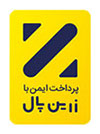In my former life, I was a preschool teacher and teacher trainer for a publishing company. That was quite a few years ago before I married, began having children, and started my work as Community Manager for Learn Safari. As it turns out, however, you can take a girl out of teaching, but you can never take the teacher out of the girl! I never stopped loving being a teacher, and now that I’m a mom raising a bilingual child, I see myself thinking back to those days and using some of those same skills in my home. As it turns out, my classroom was also something that I could not completely give up! I ended up creating a Language-Learning Corner for my child based on the following 5 reasons, and after hearing me out, you might be inspired to do the same!
I Wanted to Create a Space Where Bilingualism is Encouraged
Raising a bilingual child is very important to me. I was raised bilingually and I must say I will be forever thankful to my parents for sticking to it, even when it was hard and I was set on not speaking English! (“no habla Inglés mami!”) I was able to advance in my career, had access to more information, and was able to communicate with relatives and make new friends because I was able to speak English. These are all things I want my little girl to have.
Of course, as parents raising bilingual children, we all know that it’s a lot of work! Sometimes it feels like it’s much easier said than done and there are many ways to go about it and many philosophies to guide parents. The one thing I knew, however, is that I needed a space where we would be encouraged and inspired to use our second language.
Last Summer we were visiting relatives in Florida and we made a Target run. Low and behold, I found that much talked about dollar spot! Two Frappuccinos later, we had a cartful of teaching aids and all kinds of cool stuff to stock a mini classroom, and that’s how I got my learning corner started.
I Wanted to Give Her a Work Space She Could Call Her Own
A sense of independence, responsibility and ownership helps children build self-confidence, and the sooner we started, the better. My little girl likes things that are “hers” and setting this space works for both of us, as she can color, draw, sing and read in one spot. She can store and find everything she needs! The space is her own, which also helps to motivate her to clean up with very little help (yes, that one’s for me)
I Wanted to Ease Her Into The Habit of Studying Every Day
Living in Venezuela means that school is mandatory from a very early age and tons of homework is expected every day. We’re talking 4 year-olds getting homework every day! So, to stay ahead of the curve, I decided that it was in our best interest to start this habit early. I figured that if we started in a fun, enjoyable way, we could make this a good habit and set her on the path of lifelong learning. I know this all sounds way too serious, but if you’ve had to stay late with a cranky child finishing a last minute assignment, you know this makes sense.
A Space to Keep Our Daily Routine in Check
We could talk about the importance of a daily routine for hours, but most of us will probably agree that even if it’s hard, in the long run, a routine is better for both child and parent. Small children rely on this to feel safe and in control. Parents rely on routine for the same reasons.
Our routine is loosely as follows: After school we talk about our day, change clothes, eat lunch and take a nap. After that we have our little “English Immersion Program” where we set the date on the calendar and sing, talk about what we’re going to do, read a book, do seat work which includes coloring, sorting and/or matching. It takes us about 45 minutes, depending on her mood and stamina. Afterwards, she enjoys her screen time and free play.
A Space to Spend Time Together and Check on Her Daily Progress
This is my favorite reason! My baby girl is smart, funny and willful; a powerful combination that drives me both to laughter and tears (both of frustration and pride). To see how she grows and how her mind works is a privilege and I’m lucky to spend so much time with her. This corner of our house is a special place where we get to learn, grow, and bond together! And it’s even a place where she can invite other special people to participate with her in the learning and fun.
What Should You Put in the Language Learning Corner?
The possibilities are endless! You want it to be a print-rich environment, but you also want it to be interesting and adapted to their needs and age. But here are some basic suggestions to get you started:
- Books
- Signs, posters, etc. in target language
- labels in target language
- Paper
- Writing Utensils
- Art Supplies: paper, crayons, markers, scissors, glue sticks, paint (if you dare!)
- A Maker kit: loose pieces, nuts, bolts, pliers, hammer, nails
- A world map, atlas, or globe
- Images of the places and cultures that speak the target language
- Puzzles
- Games and manipulatives
- Calendar and weather info (especially for younger kids)
This learning corner is a work in progress, but so far my Twinkle Toes is enjoying her work time. Sometimes we spend a good amount of time in our learning space, sometimes it’s just a few minutes, but the important thing is that she’s using the target language and starting to look forward to it. But remember, do not limit the second language exposure to just a corner of your house, you can take a bilingual break anytime, anywhere!
I’d love to read your comments! Do you have a language corner? How do you keep the target language at home? What’s your child’s favorite activity? Please share your experience with our community below.
For more ideas on how to create a Language Corner, and what it should include please read article A language corner for teaching a foreign language in the home. I hope all of these ideas inspire you, and help you build a language corner perfect for your family.

 Persian
Persian  English
English  Arabic
Arabic 


